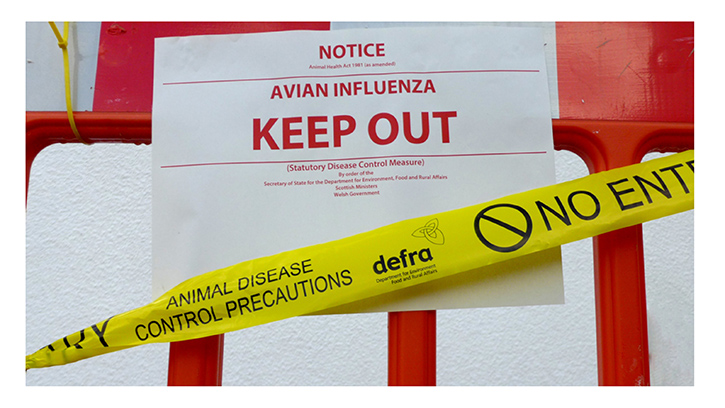The UK chief veterinary officer has announced new housing measures to protect poultry and other captive birds as part of efforts to curb the spread of avian influenza.
From 30 October 2025, all keepers of more than 50 birds, in northern, central, and parts of eastern England will be required to keep their birds housed. The move follows a rise in confirmed cases of highly pathogenic avian influenza (HPAI) in both wild birds and kept flocks.
The affected areas include Cheshire, Cumbria, Derbyshire, Durham, East Riding of Yorkshire, Greater Manchester, Lancashire, Leicestershire, Lincolnshire, Merseyside, Norfolk, North Yorkshire, Northumberland, Nottinghamshire, Rutland, Shropshire, South Yorkshire, Staffordshire, Suffolk, Tyne & Wear, and West Yorkshire.
The measures aim to reduce contact between domestic birds and infected wild birds during the high-risk winter season.
UK chief veterinary officer Christine Middlemiss said the new housing order was essential to protect both livelihoods and animal welfare. “Avian influenza can be devastating for poultry farmers and cause serious welfare issues for the birds in their care.
“The risk of avian flu is seasonally very high, which is why we are introducing these measures to help protect livelihoods and animal welfare,” she said.
“There is an increasing number of cases on commercial farms and in backyard flocks across various counties. Prompt action to prevent further spread is now necessary, and I would urge bird keepers to comply with the new housing measures.”
Richard Griffiths, chief executive of the British Poultry Council (BPC), welcomed the move: “The winter period brings a heightened risk of avian influenza. With cases rising in wild and kept birds across the country, strong action is needed. Vigilance remains key: all bird keepers must comply with biosecurity measures to protect their flocks.”
Nick Allen, chief executive of the British Egg Industry Council (BEIC), added: “This precautionary measure is vital to safeguard the health and welfare of laying hens, alongside the robust biosecurity measures farms already have in place.”


